
MINERAL INSULATED (MI)
SERIES HEATING SYSTEMS
Installation, Maintenance and
Operation Manual

2 | nVent.com
TABLE OF CONTENTS
– General information �����������������������������������������������
– Heating cable selection and storage �����������������������
– Heating cable installation ��������������������������������������
– Components selection and installation ����������������
– Temperature control and limitation ����������������������
– Thermal insulation and marking ����������������������������
– Power supply and electrical protection �����������������
– System testing ����������������������������������������������������
– Operation, maintenance and repairs ��������������������
– Trouble Shooting������������������������������������������������
– Installation Record Sheet �����������������������������������

Typical configuration for MI-heating cable system
(single conductor)
Typical configuration for MI-heating cable system
(dual conductor)
Junction box
MI cold lead cable (single conductor)
Circuit identification tag
Hot/cold joint
MI cold lead cable (dual conductor)
Hot/cold joint
Circuit identification tag
Junction box
Dual conductor
MI heating cable
End cap
Loop of MI heating cable
(single conductor)
nVent.com | 3

4 | nVent.com
1 – GENERAL INFORMATION
Use of the manual
This Installation and Maintenance manual applies
to nVent RAYCHEM Mineral Insulated (MI) series
resistance heating cable systems installed on thermally
insulated pipes and vessels and associated equipment.
In particular it refers to mineral insulated (MI) series
heating systems, which feature a specific power output
depending on various design parameters, in particular,
cable length and voltage. This manual provides general
information and shows an overview of the most
common installations and applications on MI as well as
typical examples. In any case the information provided
for specific projects will take precedence over this
manual. In case of conflicts, please contact your nVent
representative.
nVent offers two different cable constructions for
electrical heat-tracing purposes: single conductor cables,
which are typically laid in loop configurations
and dual conductor cables, which are typically laid in
single runs.
Figure : Typical cable construction
Various types of the MI bulk heating cables are
available:
HCC/HCH: Copper sheathed MI heating cables
HDF/HDC: Cupro-nickel sheathed MI heating cables
FMV/KMV/HSQ: Stainless steel sheathed MI heating
cables
HAx: Alloy sheathed MI heating cables
FMIN/KMIN/HIQ: Inconel sheathed MI heating cables
Figure : Typical heating unit designs
Design type B Single conductor
Heating
conductor(s)
Insulation
(magnesium oxide)
Single-conductor cable
Dual-conductor cable
Metal sheath
Metal sheath
Potted seal
Heating cable length
Hot/cold joint
Cold lead cable
(standard 2 m)
300 mm
Flexible
tail length
Gland

nVent.com | 5
Design type D Dual conductor
Design type E Dual conductor
The joints can be either brazed or laser welded, refer to
nVent product literature for more detailed information.
Please note that this manual only covers the installation
of pre-fabricated MI heating units� The complete
termination process and repair of heating cable units is
not covered by this manual and must be carried out by
qualified and experienced personal only�
For more information contact your nVent representative.
Important
For the nVent warranty to apply, the instructions of
this manual must be followed� Design, installation,
inspection, operation and maintenance must be in
accordance with the standards IEC , IEC-
- (former IEC part), pR IEC --
(former IEC part), EN and EN-
(where applicable)� Other local requirements and
national electric codes applicable to electrical heat-
tracing systems must be followed as well� The thermal
safety class is (to IEC -)�
Personal involved in the installation, testing and
maintenance of electric heat-tracing systems must be
suitably trained in all special techniques required, as well
as in general electrical installation work. All work should
be monitored by supervisors experienced in heat-tracing
applications.
300 mm
Flexible
tail length
Potted seal
Heating cable length
Hot/cold joint
Gland
End cap
Cold lead cable
(standard 2 m)
300 mm
Flexible
tail length
Potted seal
Heating cable length
Hot/cold joint
Gland
Cold lead cable
(standard 2 m)

6 | nVent.com
Area Classification – Ordinary
FMV/KMV/FMIN/KMIN/HCC/HCH/ HDC/HDF/HSQ/
HAx/HIQ
Area Classification – Hazardous, Zone or Zone
Special conditions for safe use in hazardous area:
Please refer to relevant hazardous area certifications
Certificate No. Code Nos.
FMV/FMIN/HCC/HCH/HDC/HDF/HSQ/HAx/HIQ
(heating elements)
Baseefa ATEXX
II G EEx e II T to T
HCC/HCH/ HDC/HDF/HSQ/HAx/HIQ (bulk cable)
Baseefa ATEXU
II G EEx e II T to T
(Russia, Kazakhstan, Belarus)
For other countries contact your local nVent
representative.
The order reference of MI heating units uses the
following nomenclature
When ordering, the complete order reference of the
MI heating unit needs to be provided. For hazardous
areas, information must also be provided about the
T-rating and temperature data relevant to the application
(max. sheath temperature data) to enable the correct
representation of data on hazardous area tags attached
to the completed heating unit in the factory. Before
installation, check the suitability of the heating units
supplied. Changes to any of the parameters may require
a re-design and must be confirmed before installation.
B/HSQ1M1000/43�0M/1217/230/2�0M/SC1H2�5/X/M20/EX
Areaclassication:
EX, ORD
Gland size M20, M25, etc...
Hot/coldjointmaterialtype:
X -stainless steel, Y - brass,
LW - laser welded
Cold lead size and sheath type
(see table on next page)
Cold lead length:Mforunitinmeters
(standard is 2 m)
Heatingunit:Operatingvoltage
Heating unit:totalwattageinW
Unit length:Mforunitinmeters
Heating cablereference
Heating cableunittype:TypeB,DorE

nVent.com | 7
2 – HEATING CABLE SELECTION AND STORAGE
The selection of the proper heating cable and
components, best suited for the application must be
checked against the relevant product literature, the most
important product properties are summarized in following
table:
Table : Properties of MI heating units
MI Heating Cable Type HCC/ HCH HDC/ HDF KMV
(2)
/ FMV/
HSQ
Numberofconductors 1 1 1
Maximumvoltage(U
0
/U) 300 / 500 V
Maximumwithstand
temp.
(1)
Brazedheatingunit 200°C 400°C 450°C
Laserweldedheatingunit – – 700°C
Temperatureclassi
-
cation
T6–T3 T6–T2 T6–T1
Minimumcablespacing 25 mm
Minimuminstallation
temp.
–60°C
Minimumbendingradius 6xCableDiameter
Chemical resistance Low Medium Medium
MI Heating Cable Type HAx1N HAx2N HAx2M KMIN
(2)
/
FMIN/HIQ
Numberofconductors 1 2 2 1
Maximumvoltage(U
0
/U) 346/600V 300/300 V 300/500 V
Maximumwithstand
temp.
(1)
Brazedheatingunit 450°C 450°C 450°C 450°C
Laserweldedheatingunit 650°C 650°C 650°C 700°C
Temperatureclassication T6–T1 T6–T1 T6–T1 T6–T1
Minimumcablespacing 25 mm
Minimuminstallationtemp. –60°C
Minimumbendingradius 6xCableDiameter
Chemical resistance High High High High
()
The hot-cold junction used in a heating unit may lead to temperature
limits below the limit of the heating cable. Contact nVent if the
exposure temperature exceed values given in the tables above for
more detailed instructions how the unit can be installed under those
circumstances.
()
KMV and KMIN are not allowed for usage in hazardous area.
Please check against individual datasheet or contact
nVent for further details.
The maximum cable power output is directly dependant
on the application and control method used. The actual
limits of MI heating cables in a specific application are
given in nVent Engineering Software (e.g. TraceCalc
Pro design software). For more details, please contact
nVent.

8 | nVent.com
Ensure that the heating cable voltage and temperature
rating is suitable for the application.
Changing design parameters such as voltage or cable
length will result in a different power output and
maximum sheath temperature� This may require a
redesign of the entire system�
To prevent fire or explosion in hazardous areas, verify
that the maximum sheath temperature of the heating
cable is below T-class or auto-ignition temperature
of the gases present in those areas� For further
information, see design documentation (e�g� TraceCalc
Pro reports)�
For the evaluation of the chemical resistance of MI
heating cables (for corrosion aspects), refer to our
product datasheets or contact nVent for assistance.
Check the design specification to make sure the correct
heating cable is installed on each pipe or vessel.
Refer to nVent product literature to select an appropriate
heating cable for each thermal, chemical, electrical and
mechanical environment.
Storage
mechanical damage.
°C may result in surface
condensation, potentially causing low insulation
resistance.
to measure the insulation resistance of MI heating
units prior to installation, also refer to section .

nVent.com | 9
3 – HEATING CABLE INSTALLATION
Warning
As with any electrical equipment or wiring installation
that operates at line voltages, damage to heating
cable and components, or incorrect installation that
allows the penetration of moisture or contamination
can lead to electrical tracking, arcing and potential
fire hazard� In case of damage and later repair on site
any unconnected heating cable end, exposed to the
environment, must be sealed appropriately�
�
documents supporting the installation
documentation (e.g. cover with aluminium foil, use
of metal mesh, fixation etc...).
engineering documentation is compatible with the
area classification the material will be installed in.
damage.
list of designed materials to the catalogue numbers
of heating cables and electrical components
received to confirm that proper materials have
been received on site. The heating cable type and
hazardous area marking (if applicable) is printed on
a tag label supplied with each heating element.
and the insulation resistance of the cable. Compare
these values to those in the design documents (see
section ).
pipework/ vessel against the design documents.
Also verify, that actual temperatures and insulation
properties are in alignment with the design
documentation.
complete and final paint and pipe coatings are dry
to touch.

10 | nVent.com
cable on the pipe, including tracing of heat sinks.
e.g. valves, flanges, supports, drains etc.
edges
etc. which could damage the heating cable. Smooth
off or cover with layers of aluminium foil. At
elevated sheath temperatures consider the use of
stainless steel foil. (e.g. HSQ; HIQ or HAx).
must be reasonably clean. Remove dirt, rust and
scale with a wire brush and oil and grease films with
a suitable solvent.
�
Heating cable pulling tips:
Figure : Importance of cable pulling direction
avoid:
The minimum bending radius of the heating cable must
be respected.

nVent.com | 11
Figure : Minimum bending radius of MI heating cables
the pipe being traced, to avoid interference with
supports and other equipment.
supports as required by the design specification or
engineering documents.
power connection, splice and tee locations.
mm of the hot to
cold junction or remote terminations.
heating cables, ensure that they do not overlap or
cross. Doing so may lead to local over-heating and
hazard of fire.
Figure : Minimal spacing must be respected
Minimum cable spacing: mm (lower spacings may
be possible but require special attention and must be
properly documented in the engineering documentation).
For installation in hazardous areas, the standard
minimum spacing is mm� This must be respected,
unless lower spacings are specifically allowed in the
engineering documentation.
6 x ∅
Cable ∅ > 6 mm

12 | nVent.com
Table : Typical allowances (in mm) per run of cable
NPS
inch
DN
mm
Light
valve
(flanged)
Light
valve
(threaded
or
welded)
Heavy
valve
(flanged)
Heavy
valve
(threaded
or
welded)
Typical
pipe
shoe
Flange
pair
Field
variance
0.5 15 300 300 300 300 910 300 2%
0.75 20 460 300 460 300 910 300 2%
1 25 610 300 610 300 910 460 2%
1.5 40 760 460 910 460 910 460 2%
2 50 760 610 1060 610 910 460 2%
3 80 910 760 1220 760 910 610 3%
4 100 1220 910 1520 910 910 610 3%
6 150 1520 1060 1830 1060 910 610 3%
8 200 2140 1220 2440 1220 910 610 3%
10 250 2440 1520 3050 1520 910 910 3%
12 300 2750 1830 3660 1830 910 1060 3%
14 350 3050 2140 4270 2140 1370 1220 3%
16 400 3350 2440 4880 2440 1370 1370 3%
18 450 3660 2750 5500 2750 1370 1680 3%
20 500 3970 3050 6100 3050 1370 1830 3%
24 600 4580 3660 7320 3660 1370 2140 3%
. Allowances above are based on typically available
fittings and supports, with an insulation thickness
equivalent to the pipe insulation. Please refer to
the engineering documentation for project specific
allowances.
. For pipes requiring more than one run of heating
cable, apply the full allowance for each run of cable
on each fitting or support as long as space allows.
However, MI heating cables must not touch or overlap
and the minimum spacing between the heating cables
must be respected.
. For some applications, it may be physically impossible
to install all of the recommended heating cable
directly on the fitting or support. In this case, install
the excess heating cable on the pipe, on either side
of the fitting or support, or distribute the additional
heater length along the entire circuit length if a lower
local temperature is acceptable. This constraint may
be difficult for small pipes and/or multiple cable runs.
If required, contact nVent for assistance.
. The field variance is important to accomodate
expansion and contraction of the heated equipment.
Also refer to figures - for more detailed
information.

nVent.com | 13
�
Fix in place with metal bandings, tie wire or wire
cloth band at a typical interval of mm and
additionally where necessary.
The use of tie wire with softer sheath MI heating
cables (like copper HC and cupro-nickel HD) should
be avoided, as the tie wire can damage the heating
cable surface over time. Do not tighten tie wire, use
wire cloth band wherever possible.
The hot to cold junction should be secured with
metal bands at a typical distance of mm on
either side of the joints.
Cable must be installed and fixed such that
movement of cable during its heating up cycles
is permitted, but not to allow cable to move freely
under its own weight. Other attachments (like
aluminium tape or glass tape) may be used, if
specified in the design documentation.
The heating cables may be installed in straight,
multiple runs as required by the design
specification.
On horizontal pipes fix on lower quadrant as shown
below and not on bottom of pipe.
Figure : Cable orientation on pipe
equally distributed around the pipe circumference.
Weatherproof
jacket (typ)
Insulation
(typ)
Cable
Pipe
One heating cable
Cable
Cable Cable
Cable
Two heating cables
Cable
Temperature
sensor
Temperature
sensor
Temperature
Sensor

14 | nVent.com
concerning the need for cable allowances and
regard the location of junction boxes/controllers
before permanently attaching the cable to the pipe.
heating cables have to be covered by aluminium or
stainless steel foil before the insulation is applied.
fixing devices as pre-punched steel strips as shown
below:
Figure : Typical cable layout on large surfaces like tank
walls
Cold
leads
Junctio
n
box
Temperature
controller
Heating cable
Temperature
sensor
Banding
Prepunched
strapping
Figure : Fixing device: pre-punched metal strap
MI cold lead cables through the insulation cladding.

nVent.com | 15
�
dimensions up to “ (e.g. PB ).
m roll) together with
stainless steel buckles (one per fixing) (e.g. SNLS +
SNLK).
the fixation on irregular shapes like pumps, valves
etc.. The use of tie wire with softer sheath MI
heating cables (like copper HC and cupro-nickel
HD) should be avoided where possible, as the tie
wire can damage the heating cable surface over
time, use wire cloth band wherever possible. For the
installation of MI heating cables on metal meshes,
tie wire may be used, but must not be tighten and
should allow for free movement of MI heating cable
during expansion and contraction.
spacing, where multiple runs of cable are applied
(e.g. HARD-SPACER-SS-MM-M).
installation on tanks, valves, pumps (e.g. mesh
types FT- and FT-)
�Typical installation details
The following details show some principles of MI
cable installation, using dual conductor cables. Single
conductor cables follow the same principles, but
typically form a loop. Attention must be given, for single
conductor configurations, where both ends need to be
terminated in the same power supply box.
Where feasible, uncoil the heating cable and lay it
alongside the pipe section to be traced� For shorter
single conductor cable, to be installed in the form
of a „hairpin“, it may be advantageous to unroll
the heating cable, loop it, and then lay it alongside
the pipe section so that both runs of cable can be
installed simultaneously.
Figure : Uncoiling heating cable
End
cap
Hot-cold joint
Tie wire /
wire cloth band
Stainless steel pipe strap, banding,
tie wire, wire cloth band, etc.
Leave large
bending radius (typ.)
End
cap

16 | nVent.com
Figure : Attaching hot-cold joint and end cap
End
cap
Hot-cold joint
Tie wire /
wire cloth band
Stainless steel pipe strap, banding,
tie wire, wire cloth band, etc.
Leave large
bending radius (typ.)
End
cap
power supply point, and the other end of heating
cable to the other end of the pipe. Support hot-cold
joint by attaching cable with pipe straps/banding
at a distance of inches ( mm) on either side
of joint. Secure joint itself to pipe with a pipe strap/
band as shown in Figure .
of pipe leaving equal slack on either side.
banding, tie wire or wire cloth band at - inches
(- mm) intervals. Tie wire should be snug,
but should not cut or indent the sheath.
The use of tie wire with softer sheath MI heating
cables (like copper HC and cupro-nickel HD) should
be avoided, as the tie wire can damage the heating
cable surface over time, use wire cloth band
wherever possible�
Figure : Allowances for valves, flanges, and pipe
supports
End
cap
Hot-cold joint
Tie wire /
wire cloth band
Stainless steel pipe strap, banding,
tie wire, wire cloth band, etc.
Leave large
bending radius (typ.)
End
cap
irregularly shaped objects such as valves or pipe
supports.
Figure : Installing cable on valves and pipe supports
End
cap
Hot-cold joint
Tie wire /
wire cloth band
Stainless steel pipe strap, banding,
tie wire, wire cloth band, etc.
Leave large
bending radius (typ.)
End
cap
und
. This allows for expansion and contraction of the
heating cable as it heats up and cools down. Use up

nVent.com | 17
excess cable by waving along pipe and increasing
amount used at each pipe support.
Distribute equally along pipe.
Figure : Completed MI heating cable installation
End
cap
Hot-cold joint
Tie wire /
wire cloth band
Stainless steel pipe strap, banding,
tie wire, wire cloth band, etc.
Leave large
bending radius (typ.)
End
cap
Figure : Pipe strap spacing
Stainless steel pipe straps, banding,
or tie wire, wire cloth band, etc...
Drip loop
Hot-cold
joint
Cold
lead
Junction box
150 mm
Insulation
app. 300 mm
150 mm
Figure : Fastening several runs of cable
app.
300 mm
Use wide stainless banding
(tension with hand-tensioner only)
Prepunched metal strapping
Wave cables with a minimum spacing of 25 mm
to 50 mm along pipe, unless design documentation
clearly states other values.
Note: Where several heating cables are required, a
pre-punched metal strapping may aid the installation
and consistent spacing of heating cables�

18 | nVent.com
Figure a: Valves
For valve sizes /“ ( mm) or smaller
Pipe
Valve body
Apply tie wire or
wire cloth band to
hold MI heating
cable in place.
MI
heating
cable
MI heating cable
See design drawing
for specific heating
cable length needed.
Stainless steel pipe straps,
banding, tie wire or wire cloth band
Pipe
Valve body
MI heating cable
See design drawing
for specific heating
cable length needed.
MI
heating
cable
Apply tie wire,
wire cloth
band or other
appropriate
fixing material to
hold MI heating
cable in place.
Stainless steel pipe straps,
banding, tie wire/wire cloth band
Figure b: Valves
For valve sizes larger than /“ ( mm)
Pipe
Valve body
Apply tie wire or
wire cloth band to
hold MI heating
cable in place.
MI
heating
cable
MI heating cable
See design drawing
for specific heating
cable length needed.
Stainless steel pipe straps,
banding, tie wire or wire cloth band
Pipe
Valve body
MI heating cable
See design drawing
for specific heating
cable length needed.
MI
heating
cable
Apply tie wire,
wire cloth
band or other
appropriate
fixing material to
hold MI heating
cable in place.
Stainless steel pipe straps,
banding, tie wire/wire cloth band
design documentation clearly states other values,
also refer to page , figure .

nVent.com | 19
Figure : Installation at ° elbow
Steel pipe
Stainless steel pipe straps,
banding, tie wire or
wire cloth band(typical)
MI heating cable
MI heating cable is applied to
outside radius of elbow.
Figure : Flanges
Flange
Heating cable
Apply tie wire or wire
cloth band to hold
heating cable in place.
Stainless steel pipe straps,
banding, tie wire
or wire cloth band

20 | nVent.com
Figure : Cable layout over clamps and straps
MI heating
cable
Stainless steel pipe straps,
banding, tie wire or
wire cloth band
Pipe
Bar hanger
Figure : Shoe and sleeve type support
Stainless steel pipe straps,
banding, tie wire or wire
cloth band (typical)
See design drawings for specific
heating cable length needed.
MI heating cable Pipe
design documentation clearly states other values,
also refer to page , figure .
Figure : Dummy supports
Insulation
Dummy leg
Pipe
shoe
Heating
cable
Stainless steel pipe straps,
banding, tie wire or wire
cloth band
Page is loading ...
Page is loading ...
Page is loading ...
Page is loading ...
Page is loading ...
Page is loading ...
Page is loading ...
Page is loading ...
Page is loading ...
Page is loading ...
Page is loading ...
Page is loading ...
Page is loading ...
Page is loading ...
Page is loading ...
Page is loading ...
Page is loading ...
Page is loading ...
Page is loading ...
Page is loading ...
Page is loading ...
Page is loading ...
-
 1
1
-
 2
2
-
 3
3
-
 4
4
-
 5
5
-
 6
6
-
 7
7
-
 8
8
-
 9
9
-
 10
10
-
 11
11
-
 12
12
-
 13
13
-
 14
14
-
 15
15
-
 16
16
-
 17
17
-
 18
18
-
 19
19
-
 20
20
-
 21
21
-
 22
22
-
 23
23
-
 24
24
-
 25
25
-
 26
26
-
 27
27
-
 28
28
-
 29
29
-
 30
30
-
 31
31
-
 32
32
-
 33
33
-
 34
34
-
 35
35
-
 36
36
-
 37
37
-
 38
38
-
 39
39
-
 40
40
-
 41
41
-
 42
42
Raychem Série MI Installation guide
- Type
- Installation guide
- This manual is also suitable for
Ask a question and I''ll find the answer in the document
Finding information in a document is now easier with AI
Related papers
-
Raychem MI-kaapeli Installation guide
-
Raychem Leak Detection Installation guide
-
Raychem Réparation de câbles à isolant minéral Installation guide
-
Raychem MI Installation guide
-
Raychem Elexant 450c Installation guide
-
Raychem régulateur 460 Installation guide
-
Raychem WinterGard Retro-240 Installation guide
-
Raychem MI Surface Snow Melting Installation guide
-
Raychem Retro WinterGard - 240 Volt Installation guide
-
Raychem In-Pipe Retro - 120 B Installation guide
Other documents
-
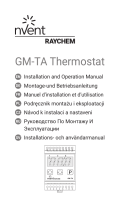 nvent GM-TA Thermostat User manual
nvent GM-TA Thermostat User manual
-
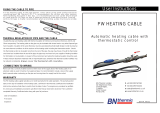 BN Thermic PW Operating instructions
BN Thermic PW Operating instructions
-
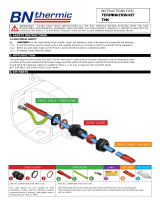 BN Thermic THK Operating instructions
BN Thermic THK Operating instructions
-
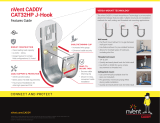 nvent CADDY CAT32HP Operating instructions
nvent CADDY CAT32HP Operating instructions
-
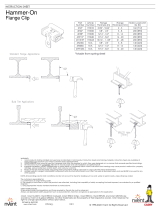 nVent CADDY 2H4 Hammer-On Flange Clip Operating instructions
nVent CADDY 2H4 Hammer-On Flange Clip Operating instructions
-
nVent Hoffman Cleantray 90-Degree Elbow Top Cover Sloped Inward Operating instructions
-
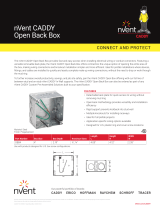 nvent CADDY Open Back Box Owner's manual
nvent CADDY Open Back Box Owner's manual
-
EasyHeat SR, TSR, HSR and HW Series Heating Cables, 14030-001 Owner's manual
-
nVent RAYCHEM AT-TS-13 User manual
-
nVent Hoffman SS304 User guide















































